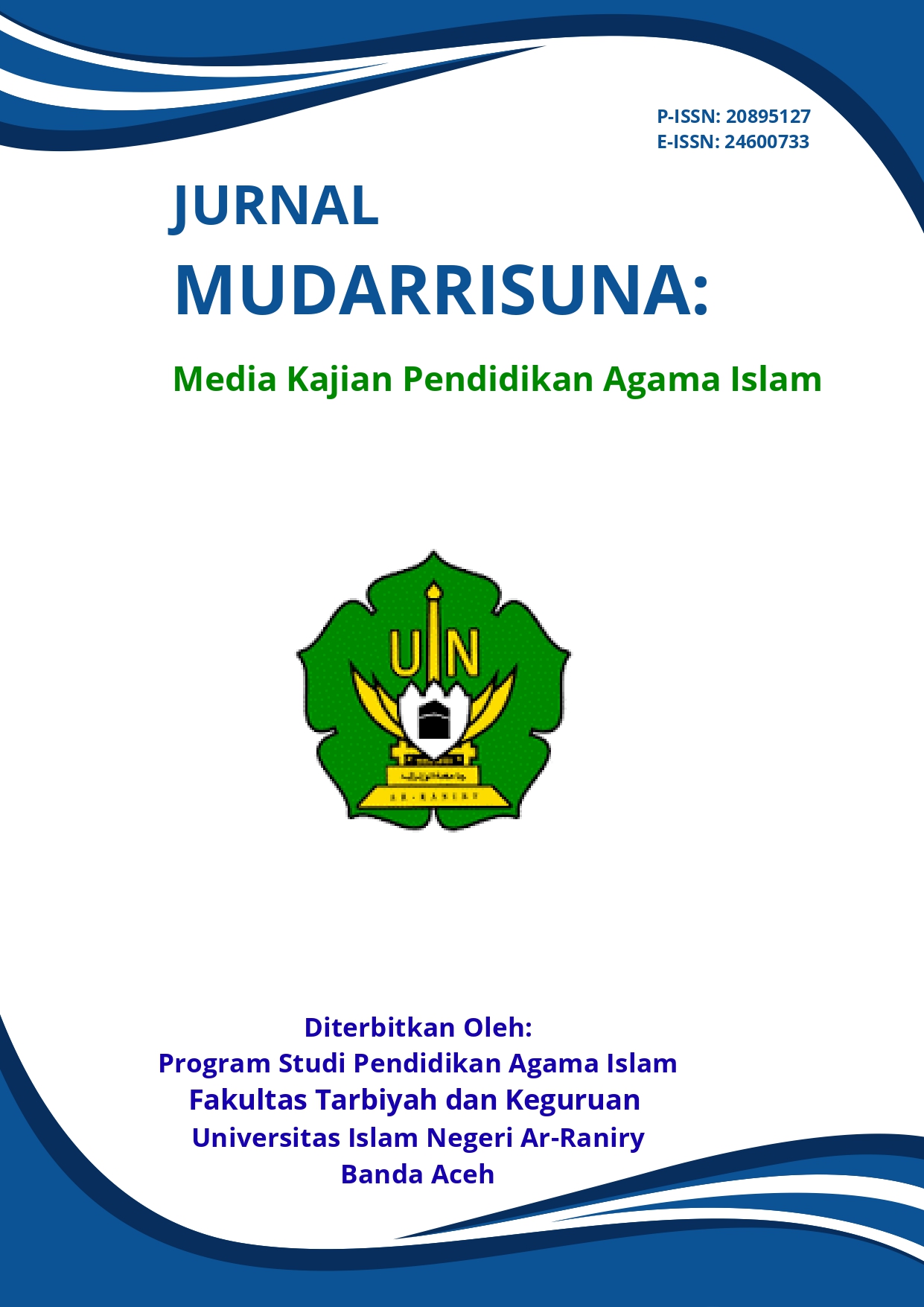ANALISIS KURIKULUM PAI DI SD ISLAM AL AZHAR 2 PASAR MINGGU JAKARTA
DOI:
https://doi.org/10.22373/63p3jf76Keywords:
Kata Kunci, Kurikulum, Pendidikan Agama Islam, SD Islam Al Azhar 2.Abstract
This research aims to determine and analyze the content of the Islamic Religious Education (PAI) curriculum contained in the Al Azhar Merdeka Curriculum package book, especially in class 2 and Learning Achievements. It is hoped that the results of this research will provide an analysis of the curriculum at Al Azhar 2 Islamic Elementary School Pasar Minggu and to find out the supporting programs for the implementation of the PAI curriculum at Al Azhar 2 Jakarta Islamic Elementary School. The results of this research are that the curriculum that applies to PAI at Al Azhar 2 Pasar Minggu Islamic Elementary School is an independent curriculum that is also adapted to the curriculum at Al Azhar, so that the school makes its own textbook when the applicable curriculum changes. Then the PAI curriculum at Al Azhar 2 Islamic Elementary School also ran smoothly. This is characterized by the existence of various habituation programs that support Islamic Religious Education learning (various competitions and interesting events are available at each special moment on the Islamic calendar). can choose activities that suit their interests and talents, and school facilities that support all these activities.
References
Badan Standar Kurikulum dan Asesmen Pendidikan (2022), Capaian Pembelajaran Mata Pelajaran Pendidikan Agama Islam dan Budi Pekerti Fase A – Fase F.
Bruner, Jerome S. 1960. The Process of Education. Cambridge: Harvard University Press.
Dewey, John. 1916. Democracy and Education: An Introduction to the Philosophy of Education. New York: Macmillan.
Eisner, Elliot W. 1985. The Educational Imagination: On the Design and Evaluation of School Programs. New York: Macmillan.
Hamalik, Oemar. (2006). Proses Belajar Mengajar. Jakarta: PT Bumi Aksara.
Jackson, Philip W. 1968. Life in Classrooms. New York: Rinehart and Winston.
Knowles, Malcolm S. 1980. The Modern Practice of Adult Education: From Pedagogy to Andragogy. Englewood Cliffs: Prentice Hall/Cambridge.
Majid, Abdul, dkk. (2006). Pendidikan Agama Islam Berbasis Kompetensi : Konsep dan Implementasi Kurikulum 2004. Bandung: PT Remaja Rosdakarya,.
Marsh, Colin J., & Willis, George. 2003. Curriculum: Alternative Approaches, Ongoing Issues. Upper Saddle River: Merrill Prentice Hall.
Nata, Abuddin. (2023). Metodologi Pembelajaran Pendidikan Agama Islam. Jakarta: Kencana.
Ramayulis. 2014. Metodologi Pendidikan Agama Islam. Jakarta: Kalam.
Syafril. (2017). Dasar-dasar Ilmu Pendidikan. Jakarta: Kencana.
Tanner, Daniel, & Tanner, Laurel N. 1980. Curriculum Development: Theory into Practice. . New York: Macmillan.
Terjemah Kemenag (2019).
Tyler, Ralph W. 1949 . Basic Principles of Curriculum and Instruction. Chicago: University of Chicago Press.
Downloads
Published
Issue
Section
License
Copyright (c) 2025 sakina ilya azis, Wardah Suhaeri Suhaeri, Wardah Suhaeri Suhaeri

This work is licensed under a Creative Commons Attribution-ShareAlike 4.0 International License.
Jurnal MUDARRISUNA: Media Kajian Pendidikan Agama Islam allows the author(s) to hold the copyright and to retain the publishing rights without restrictions. Authors who publish in this journal agree to the following terms:
- Authors retain copyright and grant the journal right of first publication with the work simultaneously licensed under a Creative Commons Attribution-ShareAlike 4.0 International License that allows others to share the work with an acknowledgment of the work's authorship and initial publication in this journal.
- Authors are able to enter into separate, additional contractual arrangements for the non-exclusive distribution of the journal's published version of the work (e.g., post it to an institutional repository or publish it in a book), with an acknowledgment of its initial publication in this journal.
- Authors are permitted and encouraged to post their work online (e.g., in institutional repositories or on their website) prior to and during the submission process, as it can lead to productive exchanges, as well as earlier and greater citation of published work.




